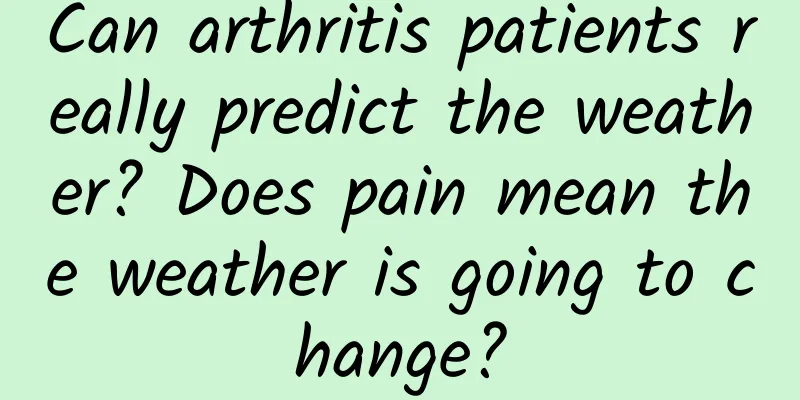What is posterior uterine wall hypoechoic?

|
I wonder if you have ever heard of the low echo of the posterior wall of the uterus? Hearing such a long name, does it mean that this is a disease that is difficult to treat? Some people will be very worried and afraid about it. In fact, this is a common tumor and is benign, so don't worry too much. So do you know him well? What should I do if I encounter low echoes on the posterior wall of the uterus? Let me give you a brief introduction so that you can have some understanding. Uterine fibroids are the most common tumor in the female reproductive system. They are benign tumors formed by the proliferation of uterine smooth muscle tissue. It is more common in women over 30 years old. When you discover uterine fibroids, don't panic psychologically, because it is a benign tumor and poses no threat to your life. If the uterine fibroids are large and have not responded to long-term conservative treatment, or if the symptoms are obvious, the uterine fibroids are large and combined with anemia and rapid growth, surgery should be considered. Common symptoms of uterine fibroids include changes in menstruation, shortened cycles, increased menstrual flow, prolonged menstruation, irregular vaginal bleeding, abdominal mass, increased leucorrhea, abdominal pain, back pain, and lower abdominal distension. In your case, considering that the fibroids are small, conservative treatment is possible. It is recommended that you take progesterone or uterine tumor elimination. The normal uterus is a hollow organ located in the center of the pelvis and is in the shape of an inverted pear. Flat in front, slightly protruding in the back. In non-pregnant adults, the uterus is 7-8cm long, 4-5cm wide, and 2-3cm thick. The uterine cavity capacity is approximately 5ml, and the ratio of the uterine body to the cervix is 2:1 in adults. Patients with low-echoic posterior uterine wall can undergo regular ultrasound examinations if the fibroids are small and do not affect menstruation, and do not need surgery or medication. Condition Analysis: The low-gyricular nodules seen in the uterus are considered to be uterine fibroids, and their morphological boundaries are manifestations of benign tumors. Normal endometrial thickness suggests that endometrial cancer can be ruled out. No features of malignancy were found. Guidance: Uterine fibroids can affect normal menstruation, causing dysmenorrhea and heavy menstrual flow. Moreover, the fibroids are large in size and require surgical treatment, mainly open laparotomy for removal. I think everyone has a general idea of what low echo of the posterior uterine wall is? Therefore, we should take more precautions in our daily life and develop good eating and hygiene habits. You should also participate in more physical exercise, enhance your immunity, and supplement more vitamins and nutrients. Used clothes should be washed and changed frequently. Go to the hospital for regular physical examinations, and seek treatment immediately if you find any abnormalities. Wish you good health! I wish you good health! |
<<: What to do if the anterior vaginal wall is protruding
>>: Analysis of the pros and cons of the placenta being located on the posterior wall of the uterus
Recommend
6 free tips to treat dysmenorrhea
Tip 1 for dysmenorrhea: Watch comedy to relax you...
If your child always picks his nose and rubs his eyes, be alert to this disease that may be causing your trouble!
Rhinitis is a common disease that troubles many p...
Which department should I go to for infertility?
When a woman suffers from infertility, her possib...
Causes of bilateral fallopian tube elevation
The female reproductive system is particularly im...
How many days of pregnancy will breasts swell?
After having sex, some women may experience swoll...
What is the latest treatment for adenomyosis?
We know that the uterus plays a very important ro...
How to check endocrine system?
Endocrine examination is an effective method to u...
My aunt has a pain on the left side of her stomach
Many women experience abdominal pain during their...
What should women do if they are indifferent to sex life?
In daily life, we often hear many male friends co...
Treatment for coldness before menstruation
Many women feel particularly cold before their pe...
My aunt is bleeding
Almost every normal woman will experience the men...
Should I walk or lie down after the abortion injection?
Induced abortion actually mainly refers to a meth...
Lateral femoral cutaneous neuritis in women
The main causes of lateral femoral cutaneous neur...
Why do I lose my hair 3 months after giving birth?
Hair loss is actually a very common phenomenon in...
How many months of pregnancy does fetal movement begin?
When a new mother feels the baby's movement f...









